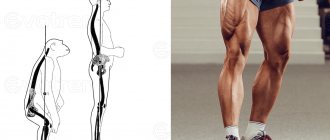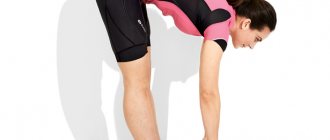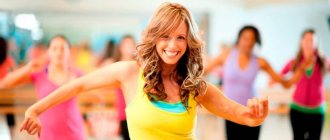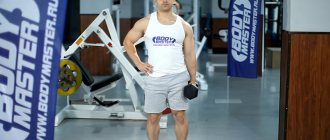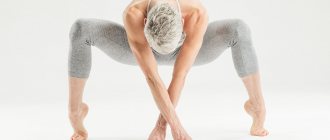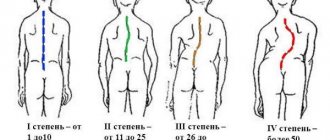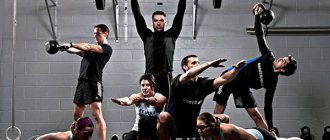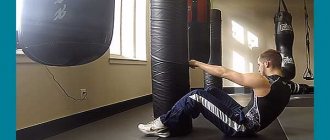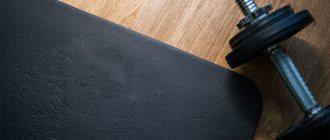Yoga for the abs is not only an opportunity to get rid of stress, relieve tension and stabilize your emotional state. With its help, you can strengthen and pump up the muscles of the body, including the abdominal muscles. A set of exercises (asanas) is suitable for those who do not want or cannot engage in active sports for medical reasons.
Cobra pose (bhujangasana)
This pose not only helps to reduce belly fat, but also strengthens the abdominal muscles. The exercise overall strengthens your upper torso and makes your back stronger and more flexible.
Wisky/Depositphotos
The pose is not recommended for patients with ulcers, hernias, back injuries, or pregnant women.
- Lie on your stomach, stretch your legs and rest on your palms (they should be located directly under your shoulders).
- Your chin and toes should touch the floor.
- Inhaling slowly, raise your body on your arms. Arch your back as far as you can.
- Depending on how you feel, hold this position for 15–30 seconds.
- Exhaling slowly, return to the starting position.
- Repeat the exercise five times with short breaks of 15 seconds.
General principles of yoga
Yoga is a set of exercises that combines strength training, muscle training, calorie burning, stretching and flexibility exercises. It strengthens the body as a whole, normalizes blood circulation and improves metabolism.
Yoga strengthens your back.
Losing weight is not the main goal of yoga. Its result is general improvement, so you shouldn’t expect a quick effect, but it will last longer. In addition, reviews say that yoga relieves stress, promotes concentration and improves mood.
Yoga is not recommended for ulcers, hernia, back injuries, or during pregnancy.
One of the benefits of yoga is that you can do it at home. Without spending extra effort, you will gain good health and a slim body for free. Starting yoga practice:
- prepare a mat and comfortable clothes;
- start with a light warm-up that will take 5-10 minutes;
- take care of a comfortable temperature in the room;
- do not eat before starting classes.
In the first days, do only simple asana exercises, gradually moving on to more complex ones. Initially, classes will consist of preparation, sun worship poses, standing asanas, backbends, forward bends and twists.
Bow Pose (Dhanurasana)
The pose strengthens the central part of the abdomen. To achieve good results, try slowly swinging back and forth while performing the exercise. This improves digestion and trains flexibility throughout the body.
Ivanves/Depositphotos
- Lie on your stomach, bend your knees, lift your shins up, place your hands behind your back and grab the outside of your ankles.
- Inhale, and exhale, bend as much as possible, lifting your pelvis and chest from the floor. The head should be moved back as far as possible.
- Try to hold this pose for 15-30 seconds and watch your breathing.
- As you exhale, return to the starting position, stretching your arms and legs.
- Repeat the exercise five times with 15-second breaks.
Warm-up
A simple yoga lesson begins with a warm-up. It should include complex muscle loads that will help warm up and prepare for further exercise. Make sure to breathe correctly, filling your lungs with air and holding it there for a few seconds. Alternate exercises with breathing cycles for better results.
Exercise will only help if combined with proper nutrition.
Each exercise should be done 3-5 times, and then move on to the next one. The cycles are repeated 2-3 times, and in total the workout will take no more than 15 minutes. It is effective to combine yoga with cardio exercise (running, walking, cycling).
The right psychological attitude is an important condition for effective yoga practice.
An important element of yoga is proper breathing. Before starting your workout, practice abdominal breathing, filling your body with oxygen with each breath. This will not only make exercise easier, but will also help speed up metabolic processes, which will lead to faster weight loss.
Use the recommended techniques to learn how to breathe properly during yoga. The first of these is full breathing. Cross your legs, straighten your back and extend your body upward. Open your hips so that your knees are as close to the floor as possible. Inhale deeply through your nose, filling your lungs with air. Exhale also through your nose, and the duration of the exhalation should be 2 times longer than the inhalation. Repeat the cycle 12 times.
You can do yoga at home.
The “stomach retraction” breathing system is trained from a sitting position. Tighten your pelvic muscles and draw them in. Exhale the air from your lungs so that your stomach retracts. Stay in this position for as long as possible. Then push your abdominal wall forward and only then inhale.
Dog Breathing can also be done while sitting. Take several short sharp exhalations, gradually emptying your lungs of air. With each push, push your abdominal wall forward. Then take a breath. Breathe at a pace that suits you, finding a rhythm that suits you.
Boat pose (naukasana)
Gladkov/Depositphotos
A wonderful pose to remove fat from the waist. In addition, it has a beneficial effect on appetite and strengthens leg muscles.
- Lie on your back, stretch your legs, place your hands next to your body, palms up.
- Inhale and slowly lift your legs, try to keep them straight and do not bend your knees.
- Point your toes and try to raise your legs as high as possible.
- Stretch your arms and try to reach your toes; keep your body at a 45 degree angle.
- Breathe evenly and hold the position for 15 seconds.
- Exhale deeply.
- Repeat the exercise five times with breaks of 15 seconds.
Why is it useful to strengthen your abdominal muscles?
Firstly, to make it beautiful. Secondly, it will provide health benefits. “Those who practice hatha yoga always look good and their body becomes toned,” comments Artem Chernyshov, yoga teacher, founder of the YogaMind . - Strong abs protect the organs of the peritoneum - liver, stomach, intestines - because they do not have a bone frame on the outside (like, for example, the heart and lungs, which are “covered” by the ribs). Plus, by strengthening the abdominal muscles, the practitioner removes excessive deflection in the lumbar spine, and this reduces the risk of developing hernias and protrusions.”
The abdominal muscles help keep our body upright. “The rectus and lateral abdominal muscles are important for correct posture and the health of the spine,” reminds Alexander Gunko. “And they are also involved in the process of respiration and many other physiological processes. And their coordinated work affects venous outflow and intra-abdominal pressure.”
So even if you don’t dream of getting a six-pack, it’s still worth exercises for your stomach and sides
Plank (kumbhakasana)
Kumbhakasana is one of the easiest poses in yoga, but at the same time very effective for burning fat. The plank tones and strengthens the shoulders, arms, back and buttocks.
Nanka-photo/Depositphotos
The exercise is contraindicated for people with high blood pressure and those who have back or shoulder pain.
- Get on your knees, place your hands in front of you.
- Walk your legs back and rise on your toes, as if you were doing a push-up; raise yourself up on your hands.
- Take a deep breath, stretch your neck and look straight ahead; your back should be straight, you will feel a slight tension in the abdominal area.
- From head to toe, your body should be like a straight line.
- Hold this position for 15 to 30 seconds; If you feel strong, try to do this for as long as possible.
- Repeat five times with short breaks.
Paschimottansana (Seated Forward Bend)
This is one of the main poses of Hatha Yoga, which stimulates the solar plexus center. Along with its toning effect on the tummy, the forward bend also offers a delightful stretch to the hamstrings, joints, and hips. It is also ideal for those who are prone to digestive disorders.
How to do
Sit on the floor in Sukhasana. Keep your spine straight and spread your legs across the floor. Toes point to the ceiling. Inhaling deeply, extend your arms above your head without bending your elbows. The gaze should follow the hands. Stretch your spine to the maximum. Exhale and bend forward from the hips. Bring your arms forward and try to touch your toes. The head should rest on your knees. Beginners can try touching their ankles or just their thighs to start. Once you touch your toes, try to hold them by pulling back, this will stretch your hamstrings. As you inhale, hold your stomach and try to maintain the starting position for 60 to 90 seconds. Slowly, increase the time you hold the position for five minutes, or more if possible.
Exhaling, stretch your body up, releasing your fingers, and return to Sukhasana.
To begin with, repeat the asana 10 times, then work up to 25 or more times.
Benefit
Relieves stress. Helps in reducing abdominal fat. Balances menstrual cycles.
Contraindications
People who have spinal disc diseases should not perform this pose. For asthma and diarrhea, the same applies.
Wind Release Pose (Pavanamuktasana)
In addition to the fact that this asana reduces lower back pain and strengthens the abdominal and hip areas, it has many more benefits. For example, the wind release pose improves intestinal function, normalizes acidity levels, and speeds up metabolism.
Shotsstudio/Depositphotos
- Lie on your back, stretch your legs, stretch your arms parallel.
- Stretch your legs, keeping your heels together.
- As you exhale, bend your knees and slowly lift them towards your chest.
- To maintain the correct position, clasp your knees with your hands.
- Breathe deeply and hold this pose for 1–1.5 minutes.
- As you exhale, lower your legs and arms to the floor.
- Repeat this exercise five times with breaks.
If you want to speed up your metabolism, we recommend performing this set of exercises in the morning. And to quickly achieve results, repeat these poses three days a week, three to five times a day.
Anatomy of the abdominal muscles: what exactly needs to be strengthened?
You may be familiar with the division of the abs into different zones - lower, middle, upper and oblique muscles. However, in fact, these are all segments of one muscle, which is attached to the chest and pelvis. This can be seen clearly in the following video.
These muscles are pumped by movements associated with bending the body, twisting it and lifting the legs. It is worth understanding: if you want to reduce your belly and make your muscles more prominent, you will have to not only pump up your abs, but also reduce the fat layer that hides it. And for this you need cardio exercise and a balanced diet, which in total will lead to weight loss and a decrease in volume. The right yoga practice will help with this.
Uddiyana Bandha exercise video for a flat stomach
In the vastness of u-tube, I found one useful video that demonstrated how to perform a yoga exercise that allows you to lose weight around the waist. Look at it carefully. Perhaps it will bring you closer to quick results.
In conclusion, I would like to say that you should never exercise through pain, force holding your breath, or artificially increase the amplitude of movement. Everything should be within reasonable limits, and the result should move forward as progress is made.
Along with these yoga poses, you should also practice proper nutrition. Also, make sure your body gets enough sleep, as scientific research has proven that insomnia negatively impacts abdominal health.
Good luck to all! See you!
Contraindications
Like other physical activities, yoga for losing belly fat requires some caution. It has a number of contraindications. These include cancer, high fever and infections, pneumonia, heart disease, spinal diseases, as well as some ailments of the nervous system.
In addition, pregnant women should not exercise to lose weight. During this period, their body is configured to bear a child, so there is a special section of practices for pregnant women, which is aimed at maintaining the body of the expectant mother.
Beginners should keep in mind that it is best to work with a trainer for the first time so that he can help you perform the asana technique correctly. Precautions are necessary in order not to harm human health.

